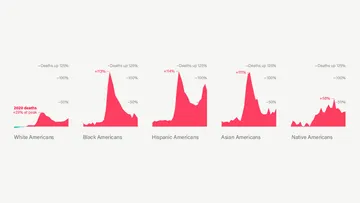Bill Clinton’s recent confrontation with Black Lives Matter protesters in Philadelphia has rekindled debate about the wisdom and political realities of the massive 1994 federal crime bill. As someone who testified on the legislation in Congress that year, I can recall the heated crime politics of the day. But I’ve also followed the impact of the bill over time, and what strikes me is that both Clinton and protesters do not fully understand the history.
The former president’s argument is that the legislation was necessary because of national concern about crime, particularly in the African-American community. He argues that Senator Biden advised him that punitive sentencing policies needed to be in the bill in order for it to pass. Further, he asserts, the legislation was a success, as demonstrated by the substantial decline in crime and violence since its passage.
In fact, the 1994 legislation marked a continuation of Clinton’s approach to crime. While running for President in 1992, Clinton left the campaign trail just before the New Hampshire primary to personally oversee Arkansas’s execution of Ricky Ray Rector, a mentally impaired black man. Afterwards, he remarked “I can be nicked on a lot, but no one can say I’m soft on crime.”
The crime bill proposed by the Administration included the Violence Against Women Act and an assault weapons ban, but its clear intent was to “get tough.” The bill included $9 billion for prison construction and $8 billion for 100,000 police officers. Among its sentencing provisions were an expansion of the federal death penalty, mandatory minimum sentencing, and “truth in sentencing” incentives to encourage states to adopt harsh punishments and limit parole. In January 1994 the President even touted the federal “three strikes and you’re out” provision of the bill in his State of the Union address.
While many African-American communities, and others, were clearly concerned about crime and violence, black political leadership did not coalesce around the bill. Congressman John Conyers, the dean of the Congressional Black Caucus and then-chair of the House Judiciary Committee, led an effort to promote an alternative crime bill, deriding prison expansion as a “simplistic approach to the crime problem.” The Black Caucus bill emphasized support for crime prevention programs, drug treatment, and creating job opportunities.
In the frenzy around crime in the 1990s the bill passed by a wide margin. Its effect on crime, though, is not at all clear. Looking at the addition of 100,000 police through the COPS program, research published in the leading criminology journal in 2007 concluded that “COPS spending had little or no impact on crime.” The authors suggest that while the funding allocation was substantial, it only amounted to less than 1% of overall police expenditures, and came with little oversight on crime prevention strategy.
President Clinton claims credit for the bill’s success in reducing crime, pointing to the substantial decline in recent years. But crime rates were already going down before the bill’s passage, in large part due to the waning of the crack cocaine epidemic and its associated violence in the late 1980s. Further, a comprehensive assessment of mass incarceration by the National Research Council in 2014 concluded that incarceration had some impact on crime, but its magnitude “was unlikely to have been large.”
But while Bill Clinton’s story is off base, so too are suggestions that the 1994 bill was the key driver of mass incarceration. In fact, prison populations began to rise in 1973, and reached double-digit annual percentage increases in the 1980s. This was a national phenomenon, largely taking place at the state level, where more than 85 percent of prisoners are housed. During these years virtually every state adopted some form of mandatory sentencing and harsher penalties for juvenile offenders, while also ramping up arrests for drug offenses.
It’s true that the federal bill included ill-advised incentives to adopt “truth in sentencing” policies designed to restrict parole release. But a GAO report looking at the 27 states that received such grants in 1997 found that the impact of the bill was less than predicted. A number of states had either already adopted such policies or had been considering doing so, while others reported that the incentives were only one factor among others in their decisionmaking. Only four states described the crime bill grants as a “key factor.”
The crime bill did not inaugurate the era of mass incarceration, but it certainly escalated the scale of its impact. Two decades later we can see that the political environment on these issues is evolving. Many Americans understand that we incarcerate excessively, that the drug war has wreaked havoc on communities, and that racial disparities throughout the criminal justice system are intolerable. Pending legislation in Congress would ameliorate some of these problems at the federal level; many states are seeking similar reforms. Belatedly, we’ve learned the hard lessons of the “tough on crime” era.
Marc Mauer is the Executive Director of The Sentencing Project and the author of Race to Incarcerate.

